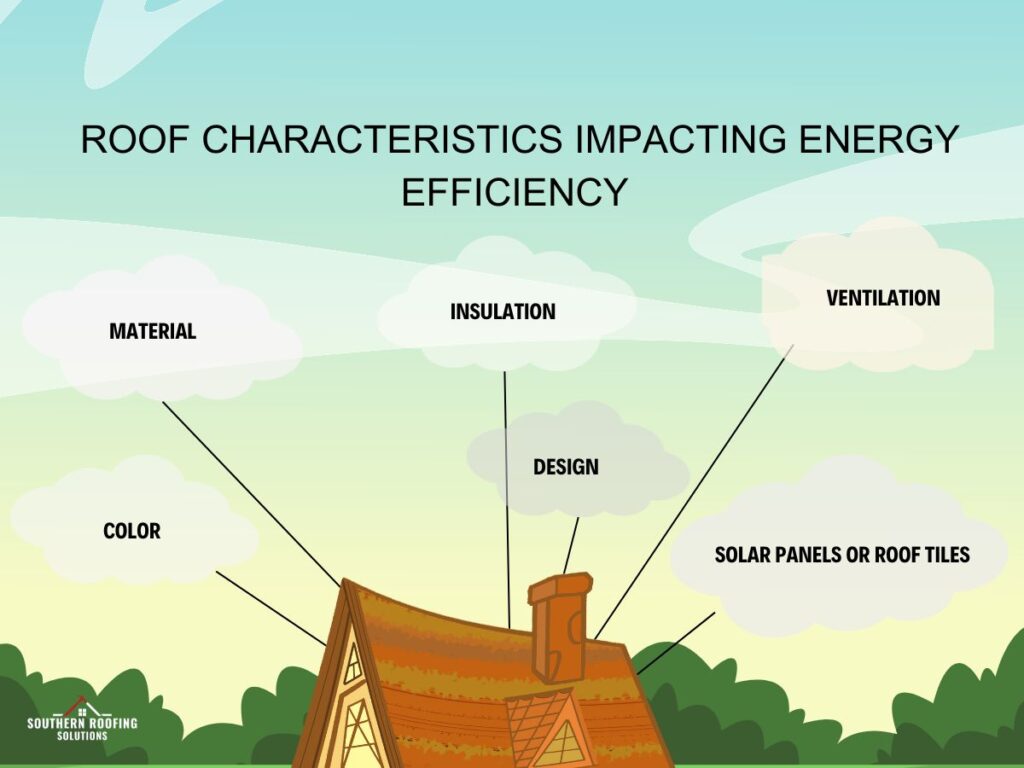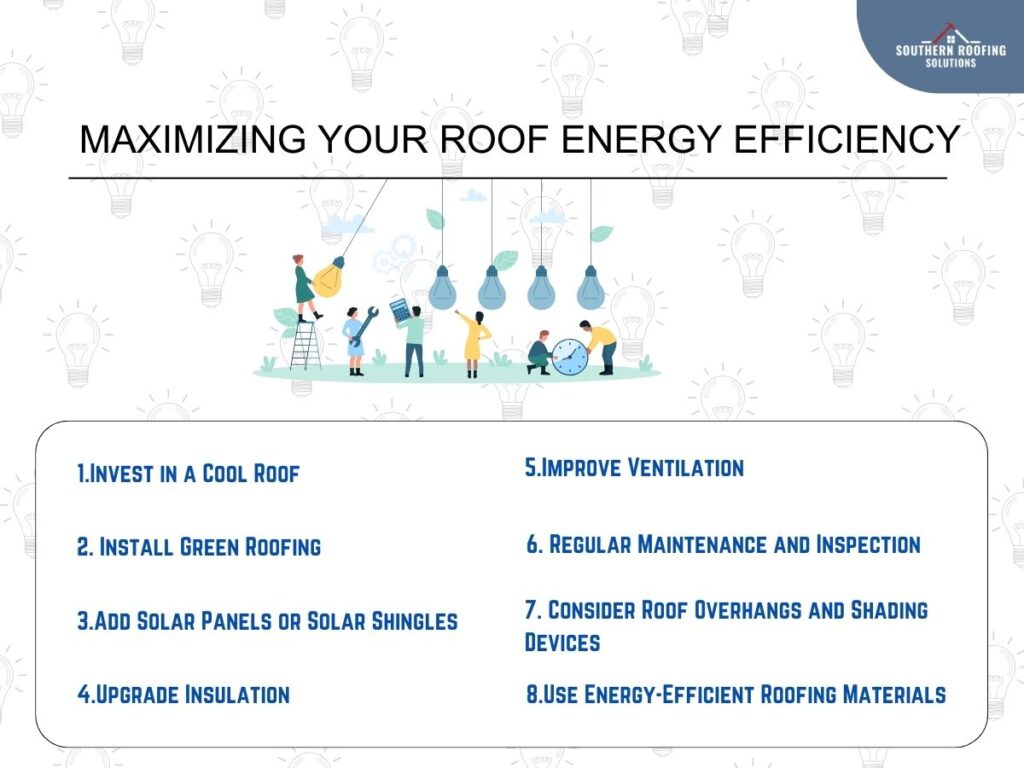What is role of your roof in energy efficiency ? In the current era of environmental consciousness and escalating energy costs, homeowners and builders alike are increasingly mindful of buildings' role in energy efficiency. The roof is a critical element that plays a pivotal part in this equation as it is the first line of defense against the elements, including sun, rain, wind, and snow.
While its primary function is to shield and protect, its role in energy efficiency is substantial and often overlooked. This article explores the different ways roofs contribute to energy efficiency and the various strategies that can maximize this impact.
In the context of residential buildings, energy efficiency refers to the effectiveness with which a house uses energy. More energy-efficient homes require less energy to perform the same tasks, reducing energy usage and lowering energy bills.
Additionally, they significantly contribute to environmental sustainability by decreasing carbon emissions. The roof is a key component contributing to a home's overall energy efficiency.
A roof is crucial for home efficiency because it plays a key role in controlling the home's temperature, significantly affecting energy consumption. A well-constructed, maintained, and insulated roof provides a barrier against environmental elements such as sun, rain, snow, and wind, thus reducing the amount of heat or cold entering the home.
During summer, a good roof reflects more sunlight and absorbs less heat, decreasing the need for air conditioning. In the winter, it helps to retain heat within the home, reducing the reliance on heating systems.
Furthermore, a well-designed roof can aid in proper ventilation, preventing moisture accumulation that could lead to energy inefficiency and structural damage. Therefore, the roof is vital in maintaining home efficiency and reducing energy costs.
The energy efficiency of a roof is influenced by several key characteristics:

Different roofing materials have varying levels of energy efficiency, primarily due to their solar reflectance and thermal emittance properties. For instance, metal roofs have high solar reflectivity, which allows them to reflect more sunlight and absorb less heat than asphalt or wooden shingles.
Tile roofs, especially those made of lighter-colored clay, are also known for their excellent reflective properties. Some materials are also better at emitting absorbed heat, which further improves a roof's energy efficiency.
The color of your roof plays a significant role in its energy efficiency. Light-colored or 'cool' roofs are designed to reflect more sunlight and absorb less heat than a standard roof.
On the other hand, dark roofs tend to absorb more heat and can, therefore, make your home hotter. Reflective roof coatings can also be applied to make darker roofs more energy efficient.
The level of insulation in your roof directly impacts its energy efficiency. Effective roof insulation reduces the amount of heat that enters the home during summer and escapes from it during winter. This means less reliance on cooling and heating systems, lowering energy consumption.
A well-ventilated roof helps maintain a consistent temperature inside the home, reducing the need for artificial heating and cooling. Proper ventilation allows hot air to escape during summer, preventing excess heat build-up in your home. It also helps keep the roof cool, which minimizes heat absorption.
The design and shape of a roof can also affect its energy efficiency. Certain designs, such as a south-facing roof, can take advantage of solar gain in the winter to help heat the home. The pitch or slope of the roof can also impact how much solar heat is absorbed.
Installing solar panels or solar roof tiles can greatly enhance your home's energy efficiency. These components absorb sunlight and convert it into electricity, which can be used to power your home.
By paying careful attention to these characteristics, homeowners can enhance their roof's energy efficiency, reducing their energy costs and environmental footprint.
The comprehensive overview is an excellent summary of various characteristics that impact the energy efficiency of a roof. Dan Abelson, roof expert from Roofs By Design, gave another aspect worth mentioning: Location and Climate Considerations.
"Understanding the local climate and weather patterns is essential for choosing the most energy-efficient roofing materials and design. Different climates require different approaches to roofing to maximize energy efficiency.
For example, a highly reflective roof that minimizes heat absorption would be advantageous in a hot, sunny climate. While in a cold climate, a roof designed to absorb more solar energy might be beneficial, combined with robust insulation to retain that heat.
The design must consider aerodynamics in a windy area to minimize heat loss through the wind effect. And in a rainy or snowy area, the materials and design should be chosen to manage moisture effectively, preventing issues that might reduce insulation effectiveness.
The local environment can also be a factor. If tall trees or other structures surround a building, these might shade the roof and change the calculus for energy efficiency strategies.
Therefore, aligning the roof's characteristics with the specific local climate and environmental conditions can enhance energy efficiency, making it an essential consideration in the overall strategy." Dan Abelson | Roof experts in Raleigh, NC.
Achieving maximum energy efficiency with your roof involves an interplay of various strategies. Depending on your local climate, house orientation, and budget, some of these solutions may be more beneficial than others.

If you're planning to replace your roof, consider investing in a 'cool roof'. This type of roof uses reflective materials, usually in lighter colors, to reflect more sunlight and absorb less heat than traditional dark-colored roofs. This can result in a significantly cooler home during hot weather, reducing the need for air conditioning and saving energy.
Another energy-efficient roofing option is a green roof or living roof. These roofs are covered with vegetation and a growing medium, allowing them to provide excellent insulation. They help to absorb heat, provide natural cooling through evapotranspiration, and reduce the urban heat island effect.
With the decreasing costs of solar technology, adding solar panels or solar shingles to your roof can be a cost-effective way to increase your home's energy efficiency significantly. These systems can generate electricity to power your home, reducing reliance on grid energy.
Ensuring your roof and attic are well-insulated is crucial for energy efficiency. Insulation reduces heat transfer, keeping your home cooler in the summer and warmer in the winter. Various insulation options, such as fiberglass, cellulose, or spray foam, are available, each with different R-values (a measure of thermal resistance) and costs.
Proper roof ventilation allows hot air to escape during summer and prevents moisture build-up during winter. This protects your roof from damage and helps maintain a more constant temperature in your home, reducing the need for artificial heating and cooling.
Regular roof maintenance and inspection can ensure optimal functioning and energy efficiency. Clean your roof of debris regularly to maintain its reflectivity. Check for damage or signs of wear and tear, such as missing or broken shingles or tiles, as these can impact the roof's insulation properties. If necessary, hire a professional to conduct a thorough inspection and carry out necessary roof repairs.
Design elements like roof overhangs and shading devices like pergolas or awnings can block high summer sun, reducing heat gain while still allowing lower winter sun to enter and warm your home.
Some roofing materials are more energy-efficient than others. For instance, metal roofs with specialized reflective coatings can be more efficient than asphalt shingle roofs, as they reflect more sun energy and keep your home cooler.
Combining these strategies can significantly enhance your roof's energy efficiency, ultimately leading to reduced energy costs and a more sustainable home.
In an era where sustainable living and energy efficiency are paramount, it's clear that the role of the roof in energy efficiency is crucial. You can significantly reduce your energy costs and carbon footprint by considering your roof's material, color, insulation, ventilation, and design.
As this article illustrates, the roof is more than a protective shield; it's a vital element in the fight against climate change and an essential tool in achieving a more sustainable future.